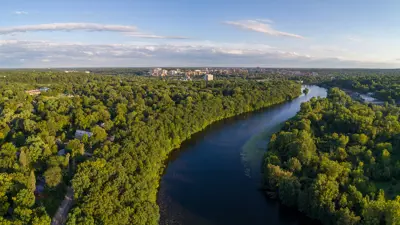Identifying Features
- Locally common, has been declining in many areas.
- Areas with abundant submerged and emergent vegetation are preferred.
- Rarely use temporary waters.
- Tadpoles and adults bury themselves in bottom mud during hibernation.
- Adults may hibernate from mid-October to April or May.
- Love warmer weather, inactive until water temperature is above 60 degrees Fahrenheit.
Call
- Series of bass notes, like “jug-o-rum.”
Breeding
- Breeding usually begins in mid-May, peaks in June, and lasts into July
- Territorial (6-20ft. in diameter).
- 5,000-20,000 eggs are laid in a large free floating mass.
Development
- Hatch in 3-6 days.
- May transform in 2 years, but many take up to 3 years.
- Sexual maturity is 2-4 years after transformation.
Conservation Note
- Human use of lakeside, including construction, disrupts Bullfrog reproductive activities.
- Heavily collected for restaurant and scientific supply.
- Unlikely that this species can survive intense use for commercial or even personal use. This is due to the long time needed for growing, and slow population replacement rate.
Habitat Type
- Ephemeral wetlands.
- Permanent wetlands.
- Forests.
- Grasslands and savannas.
- To a lesser extent, bullfrogs may be found in urban and agricultural areas.




 734.794.6627
734.794.6627
